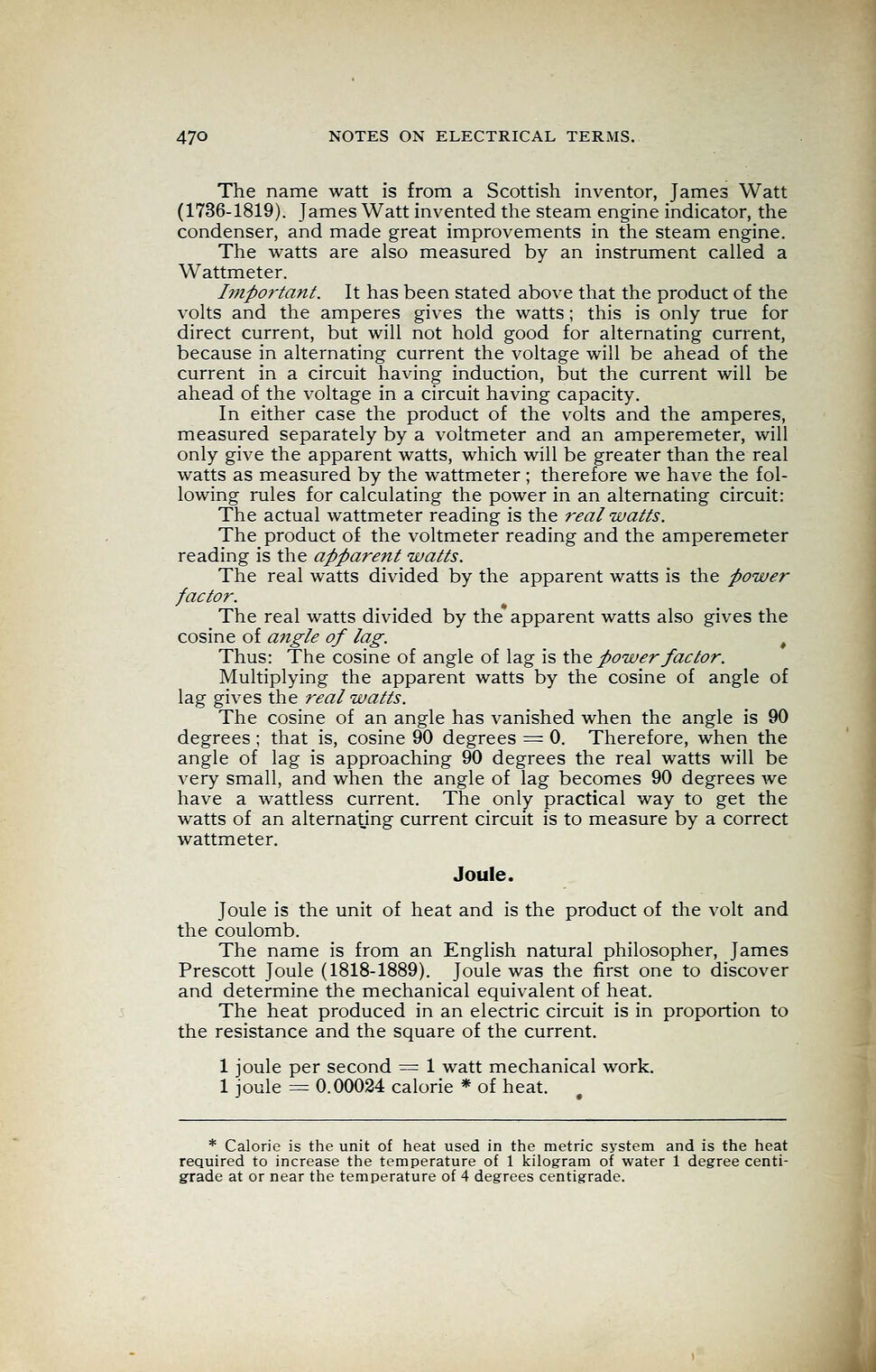
Full resolution (JPEG) - On this page / på denna sida - Notes on Electrical Terms - Watt - Joule

<< prev. page << föreg. sida << >> nästa sida >> next page >>
Below is the raw OCR text
from the above scanned image.
Do you see an error? Proofread the page now!
Här nedan syns maskintolkade texten från faksimilbilden ovan.
Ser du något fel? Korrekturläs sidan nu!
This page has never been proofread. / Denna sida har aldrig korrekturlästs.
47° NOTES ON ELECTRICAL TERMS.
The name watt is from a Scottish inventor, James Watt
(1736-1819). James Watt invented the steam engine indicator, the
condenser, and made great improvements in the steam engine.
The watts are also measured by an instrument called a
Wattmeter.
Important. It has been stated above that the product of the
volts and the amperes gives the watts ; this is only true for
direct current, but will not hold good for alternating current,
because in alternating current the voltage will be ahead of the
current in a circuit having induction, but the current will be
ahead of the voltage in a circuit having capacity.
In either case the product of the volts and the amperes,
measured separately by a voltmeter and an amperemeter, will
only give the apparent watts, which will be greater than the real
watts as measured by the wattmeter ; therefore we have the fol-
lowing rules for calculating the power in an alternating circuit:
The actual wattmeter reading is the real watts.
The product of the voltmeter reading and the amperemeter
reading is the apparent watts.
The real watts divided by the apparent watts is the power
factor.
The real watts divided by the apparent watts also gives the
cosine of angle of lag. t
Thus: The cosine of angle of lag is the powerfactor.
Multiplying the apparent watts by the cosine of angle of
lag gives the real watts.
The cosine of an angle has vanished when the angle is 90
degrees ; that is, cosine 90 degrees = 0. Therefore, when the
angle of lag is approaching 90 degrees the real watts will be
very small, and when the angle of lag becomes 90 degrees we
have a wattless current. The only practical way to get the
watts of an alternating current circuit is to measure by a correct
wattmeter.
Joule.
Joule is the unit of heat and is the product of the volt and
the coulomb.
The name is from an English natural philosopher, James
Prescott Joule (1818-1889). Joule was the first one to discover
and determine the mechanical equivalent of heat.
The heat produced in an electric circuit is in proportion to
the resistance and the square of the current.
1 joule per second = 1 watt mechanical work.
1 joule = 0.00024 calorie * of heat.
* Calorie is the unit of heat used in the metric system and is the heat
required to increase the temperature of 1 kilogram of water 1 degree centi-
grade at or near the temperature of 4 degrees centigrade.
<< prev. page << föreg. sida << >> nästa sida >> next page >>